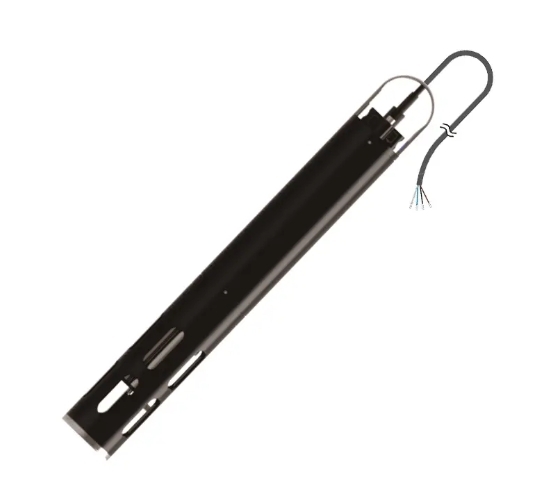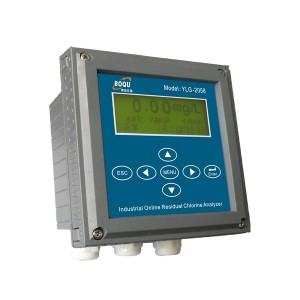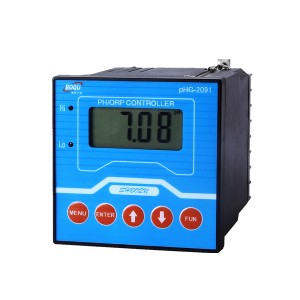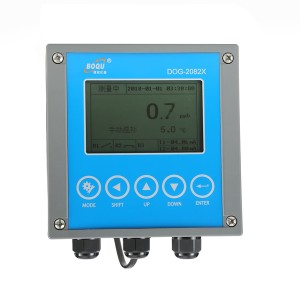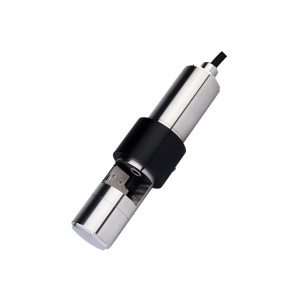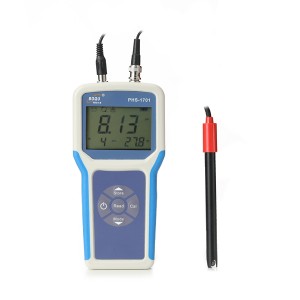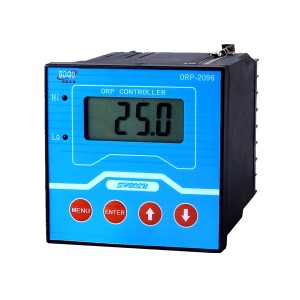Water quality monitoring plays a pivotal role in safeguarding the health of ecosystems and ensuring access to safe drinking water. The measurement and assessment of water quality parameters are essential for environmental conservation and public health. In this blog, we will explore the importance of water quality assessment and delve into a water quality sensor project. This project aims to develop a cutting-edge water quality sensor system that will aid in the accurate and efficient monitoring of water quality. The project is led by Shanghai BOQU Instrument Co., Ltd., a renowned manufacturer in the field of analytical instruments.
Water Quality Sensor: Importance of Water Quality Assessment
Water quality assessment is indispensable for several reasons. Firstly, it is critical for safeguarding aquatic ecosystems, as changes in water quality can have detrimental effects on aquatic life. Secondly, it is crucial to ensure access to safe drinking water. Contaminated water can lead to a range of health issues, making it imperative to monitor and maintain water quality standards. Additionally, water quality assessment is vital for industrial and agricultural processes, as it influences the efficiency and sustainability of various operations.
Water Quality Sensor: Purpose of the Water Quality Sensor Project
The primary purpose of the water quality sensor project undertaken by Shanghai BOQU Instrument Co., Ltd. is to develop a state-of-the-art water quality sensor system. This system will provide accurate and real-time data on key water quality parameters, enabling efficient monitoring and prompt response to any deviations from the desired water quality standards. Ultimately, the project seeks to contribute to environmental conservation, public health, and the efficient functioning of industries and agriculture.
Water Quality Sensor: Project Goals and Objectives
A. Water Quality Sensor: Project Goals
1. Accuracy: Develop a sensor system that provides precise and reliable measurements of water quality parameters.
2. Efficiency: Create a sensor system that can operate continuously with minimal maintenance.
3. Accessibility: Make the sensor system user-friendly and cost-effective, ensuring it can be utilized across various applications and industries.
B. Water Quality Sensor: Objectives
1. Sensor Selection: Identify and integrate appropriate sensors for measuring key water quality parameters such as pH, dissolved oxygen, turbidity, and conductivity.
2. Microcontroller Integration: Incorporate a powerful microcontroller or processor unit to gather and process sensor data efficiently.
3. Power Source Optimization: Ensure a sustainable and long-lasting power source for the sensor system, potentially utilizing renewable energy sources.
4. Communication Interface: Develop a reliable communication interface to transmit data in real-time to monitoring stations or users.
5. Data Processing Algorithms: Create sophisticated data processing algorithms to interpret sensor data and provide meaningful insights.
6. User Interface (if applicable): If intended for end-users, design a user-friendly interface for easy data access and interpretation.
7. Sensor Enclosure and Packaging: Develop a robust and waterproof sensor enclosure to protect sensitive components from environmental factors.
Water Quality Sensor: Sensor Design and Components
A. Water Quality Sensor: Hardware Components
1. Sensors for Water Quality Parameters: Select high-quality sensors for measuring parameters like pH, dissolved oxygen, turbidity, and conductivity. These sensors are the heart of the system and must provide accurate and reliable data.
2. Microcontroller or Processor Unit: Integrate a powerful microcontroller or processor unit capable of handling data from multiple sensors and executing data processing algorithms efficiently.
3. Power Source: Explore options for a sustainable power source, which may include rechargeable batteries, solar panels, or other renewable energy solutions. Reliability and longevity are essential considerations.
4. Communication Interface: Develop a communication interface, which could include options like Wi-Fi, Bluetooth, or cellular connectivity, to ensure real-time data transmission and remote monitoring.
B. Water Quality Sensor: Software Components
1. Sensor Data Processing Algorithms: Implement advanced algorithms to process raw sensor data into meaningful information. Calibration and data correction algorithms are vital for accuracy.
2. User Interface (if applicable): Design an intuitive user interface for end-users, which can be a mobile app or a web-based platform, to access and visualize water quality data easily.
C. Water Quality Sensor: Sensor Enclosure and Packaging
To ensure the durability and longevity of the water quality sensor system, a robust and waterproof sensor enclosure must be designed. This enclosure will protect sensitive components from environmental factors, ensuring the system’s reliability in various settings.
Water Quality Sensor — Parameter Selection: The Foundation of Sensor Performance
A. Water Quality Sensor: Justification for the Selection of Specific Water Quality Parameters
The selection of specific water quality parameters is crucial to the effectiveness of any water quality sensor. Parameters such as pH, dissolved oxygen (DO), turbidity, conductivity, and temperature are commonly monitored due to their direct impact on water quality and ecological health. The choice of these parameters is justified by their significance in detecting pollution, understanding aquatic ecosystems, and ensuring the safety of drinking water sources.
B. Water Quality Sensor: Considerations for Sensor Accuracy and Precision
When choosing water quality parameters to monitor, sensor accuracy and precision must be paramount considerations. Shanghai BOQU Instrument Co., Ltd., known for its high-quality sensors, places a strong emphasis on precision engineering. Ensuring the sensors are accurate within a specific range and precise enough to detect minute changes in water quality is essential. This guarantees reliable data, critical for decision-making and environmental protection efforts.
Water Quality Sensor — Sensor Calibration: The Key to Reliable Data
A. Water Quality Sensor: Importance of Sensor Calibration
Sensor calibration is the process of adjusting a sensor’s output to match a known standard. This step is indispensable in maintaining the accuracy and reliability of water quality data. Regular calibration ensures that sensors provide consistent and trustworthy measurements, which are vital for monitoring changes in water quality over time.
B. Water Quality Sensor: Calibration Methods and Procedures
Calibrating water quality sensors involves exposing them to known standards or reference solutions to check their accuracy. Two common calibration methods are single-point and multipoint calibration. Single-point calibration uses one standard solution, while multipoint calibration involves multiple standards to calibrate the sensor across its measurement range. Accurate calibration procedures, as recommended by Shanghai BOQU Instrument Co., Ltd., should be followed diligently to achieve reliable results.
C. Water Quality Sensor: Data Logging and Storage
Calibration data should be logged and stored for future reference. Modern water quality sensors, like those from Shanghai BOQU Instrument Co., Ltd., often come equipped with data logging capabilities. Properly stored calibration data allows for traceability and ensures that sensor performance can be monitored and maintained over time.
Water Quality Sensor — Data Transmission and Visualization: Making Sense of Sensor Data
A. Water Quality Sensor: Methods for Transmitting Sensor Data
To maximize the utility of water quality sensors, it is essential to transmit data efficiently. Various methods, including Bluetooth, Wi-Fi, and Internet of Things (IoT) connectivity, can be employed. The choice depends on the monitoring scenario and the need for real-time data access.
B. Water Quality Sensor: Real-time Data Visualization Options
Real-time data visualization is instrumental in quickly assessing water quality conditions. Mobile apps and web interfaces can be used to visualize data, providing users with real-time insights into water quality parameters. These visualizations are indispensable for rapid response in cases of pollution or ecological disturbances.
C. Water Quality Sensor: Data Storage and Analysis Techniques
Efficient data storage and analysis techniques are crucial for long-term assessment and trend analysis. Properly stored data allows for historical comparisons and trend identification, aiding in the development of effective strategies for water quality management. Sophisticated analysis tools can provide deeper insights into the data generated by water quality sensors, further enhancing their utility.
Conclusion
The water quality sensor project led by Shanghai BOQU Instrument Co., Ltd. holds great promise in advancing water quality monitoring technology. With its clear goals and well-defined objectives, this project seeks to develop a cutting-edge sensor system that will contribute significantly to environmental conservation, public health, and industrial efficiency. By carefully selecting hardware and software components and focusing on accurate data collection and transmission, this project is poised to make a positive impact on the field of water quality assessment.
Post time: Sep-15-2023

